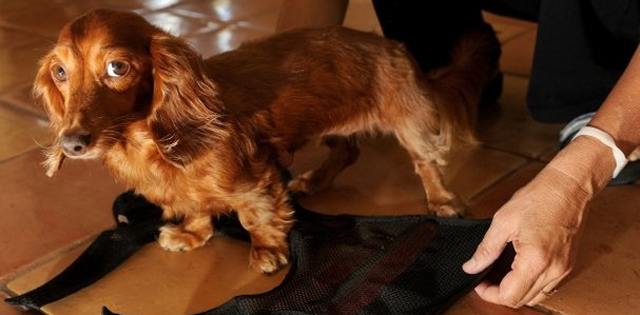Talking To Your Vet About Intervertebral Disk Disease
What Are Intervertebral Disks?
The intervertebral disks are the pads that sit between your dog’s vertebrae. They are gelatinous pillows lined with a fibrous coating. Their function is to absorb shock and protect each vertebra from touching each other.
What Is Intervertebral Disk Disease (IVDD)?
IVDD is a degenerative condition in which the intervertebral disks begin to break down. Once this process begins, the disks lose their filling and begin to calcify or become bony structures. In Type I IVDD, the disks begin to herniate, and in Type II IVDD they begin to protrude. When this happens, it usually happens in an upward direction, and because the spinal cord is above them, it will be affected.
Type I IVDD
Type I IVDD can affect any part of the spinal cord. Dogs that have short legs and elongated bodies seem to be at greater risk since there is more emphasis on their long spinal columns. Elderly dogs are less likely to develop this affliction since the disease usually strikes dogs in their younger years. Most dogs will not develop it when less than one year old; middle age seems to be the prime time for the disease to begin.
Signs of IVDD
Your dog will begin to show symptoms as a result of the disk rubbing against the spinal cord. Sometimes, the disks will touch, and sometimes, disk material will enter the spinal canal causing spinal compression. Your dog might show signs of back pain, limb weakness, or paralysis. The more damage done to the spinal cord, the more severe his symptoms will appear.
Diagnosing and Treating IVDD

One very important thing to remember when treating a dog with IVDD is that as long as they can feel their limbs, they are treatable. Even if a dog is unable to move his legs, as long as he can still feel them, there is a good chance that surgery will be successful.
Diagnosing IVDD involves a lot of imaging. Spinal X-rays and MRIs are used to see what is happening in the spinal column, and neurologic exams are performed to assess the dog’s condition. Depending on the severity, the dog may need anything from therapy to surgery.
Dogs that have a mild case with just some back pain or weakness may get by with medical intervention. As long as the dog is still strong and can walk, they may be on bed-rest and treated with pain meds for six to eight weeks. Keeping him confined to a bed or cage is imperative to heal the degenerative disk. If this doesn’t work, surgery is an option.






